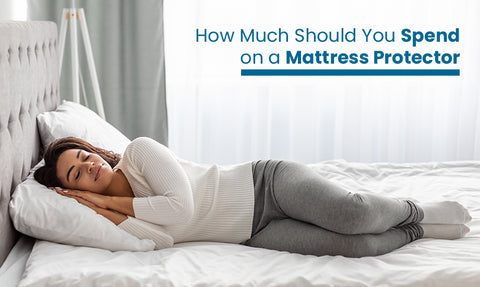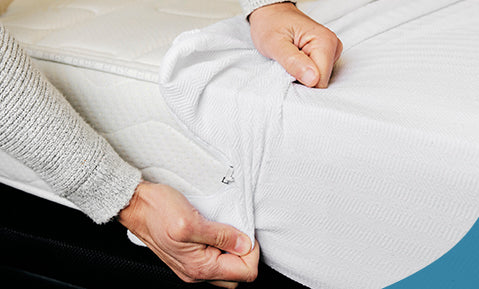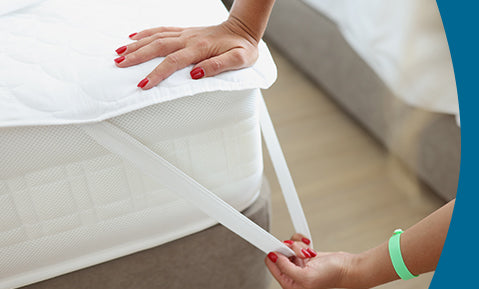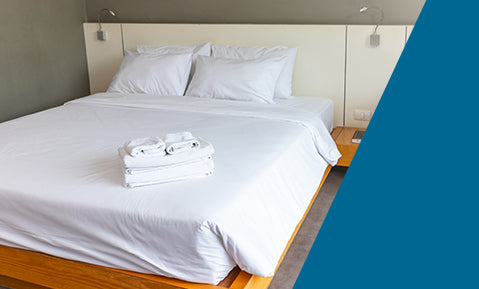![How to Get Rid of Lower Back and Hip Pain [3 Easy Steps]](http://www.sleepsia.com/cdn/shop/articles/c65f41a6b2454553c0c7dc213099463f.jpg?v=1616589784)
Lower back and hip pain often result from improper posture, which leads to muscle strain. Once you start practicing good posture, the pain usually subsides over a week or two.
However, to correct your posture and get rid of lower back and hip pain, you need to rely on the 3 easy methods provided in this article.
Step #1: Correct your Sitting Posture
Your sitting posture has the most impact on your lower back and hip pain. Since most of us spend a lot of time sitting at a desk, it is important to sit with correct posture to reduce pressure from the lower back and hips.
To improve your sitting posture and relieve pain, use the following advice:
- Make sure your back is well-supported.
- If the chair does not have adequate lumbar support, place a rolled towel on top of it.
- Legs should be pointing down or parallel to the ground.
- Place your feet firmly on the ground to equally distribute your body weight.
- Maintain a comfortable working environment by keeping the screen at eye level and using a cushioned wrist rest.
- Walking breaks should be taken on a regular basis.
Sitting for a long time is the main problem that leads to pain. To get rid of lower back and hip pain, you should get up and take a small walk whenever possible, ideally every 25-50 minutes.
Step #2: Using the Right Mattress

When you use the right mattress, your spine is aligned in a straight line. Unless that happens, your spine experiences a lot of stress, leading to serious back pain and hip pain.
To choose the right mattress, you need to check its:
- Material
- Firmness
- Comfort level
Both firmness and comfort level will depend on the fill material. But you also need to check for personal preference. For instance, a memory foam mattress is comfortable but gets ruined when it comes in contact with water.
A mattress with both foam and spring provides a good level of comfort. But again, you need to try different mattresses in order to find the one that suits your body type.
Note: also check for any allergies. If you’re allergic to a certain material, then don’t get a mattress made with that material.
Step #3: Use a Pillow to Relieve Pressure
All sleeping positions cause some degree of stress on your lower back. The additional stress on the joints and muscles can lead to:
- Chronic lower back pain
- Muscle strain
- Disc herniation
Here’s what people with different sleeping positions do to relieve pressure from hips and lower back.

If you sleep on your back, lay the cushion between your knees to relieve some of the strain on your lower back and return it to a more neutral position.

Those who sleep on their sides do so on one of their sides: left or right. The higher leg tends to drop down and rest on the mattress in either situation.
This causes a lot of stress on the joints and discs by rotating the spine in an abnormal way. The lumbar spine experiences stress and pressure.
Keeping a cushion between your legs when sleeping is a simple method to avoid this. Your upper leg will not slide down because of the cushion between your knees.

If you sleep on your stomach, lay a cushion beneath your abdomen to keep your lower back in a more neutral posture. Stomach sleeping is generally discouraged since it can cause cervical and lower back discomfort.
Body pillow for Pregnant Women

A cushion between the knees is beneficial to pregnant women, not only side sleepers. They should, however, use a body pillow instead of a regular pillow.
A body pillow can assist you in finding the ideal sleeping position as your contours change throughout pregnancy.
Conclusion
If your pain still persists, you should consult a health expert, an orthopedist or physiotherapist. Lower back and hip pain can have a serious impact on your productivity, so it’s best to consult an expert to relieve pain as soon as possible.
FAQs
Q. How long does lower back pain take to heal?Ans. That depends entirely on the underlying cause. Most cases of lower back pain resolve within a week or two. If the pain lasts for longer than this, or if the pain radiates down your spine into your legs, then you should consult a doctor as soon as possible.
Q. Does a lumbar support help with lower back pain?
Ans. A lumbar support can reduce pressure from your lower back. It can also provide extra support to your spine. So you can try using a lumbar support and find out for yourself.
Q. What can I do about my tailbone pain?
Ans. You can use a doughnut or coccyx pillow to relieve tailbone pain. These pillows reduce pressure from the tailbone and distribute your weight evenly across the cushion.












